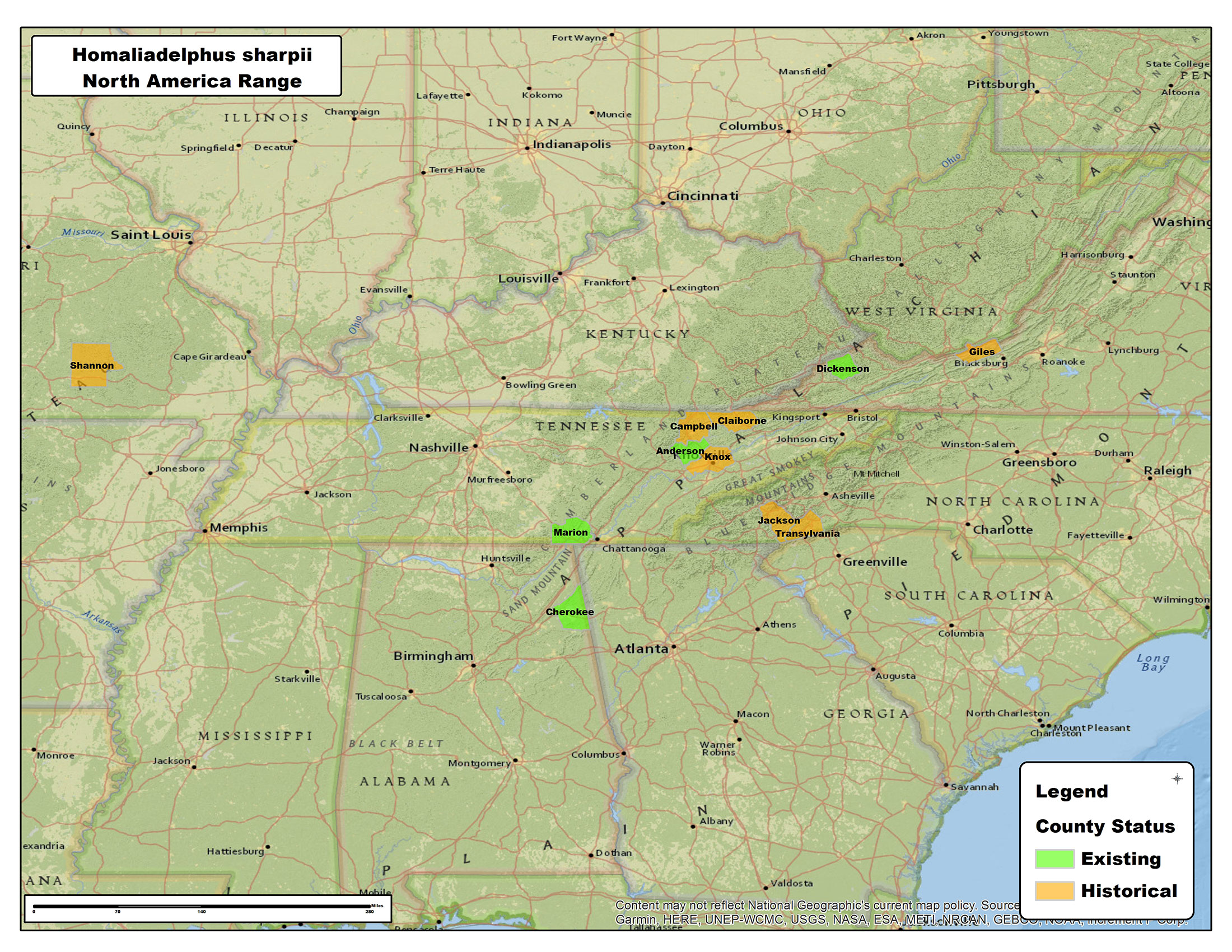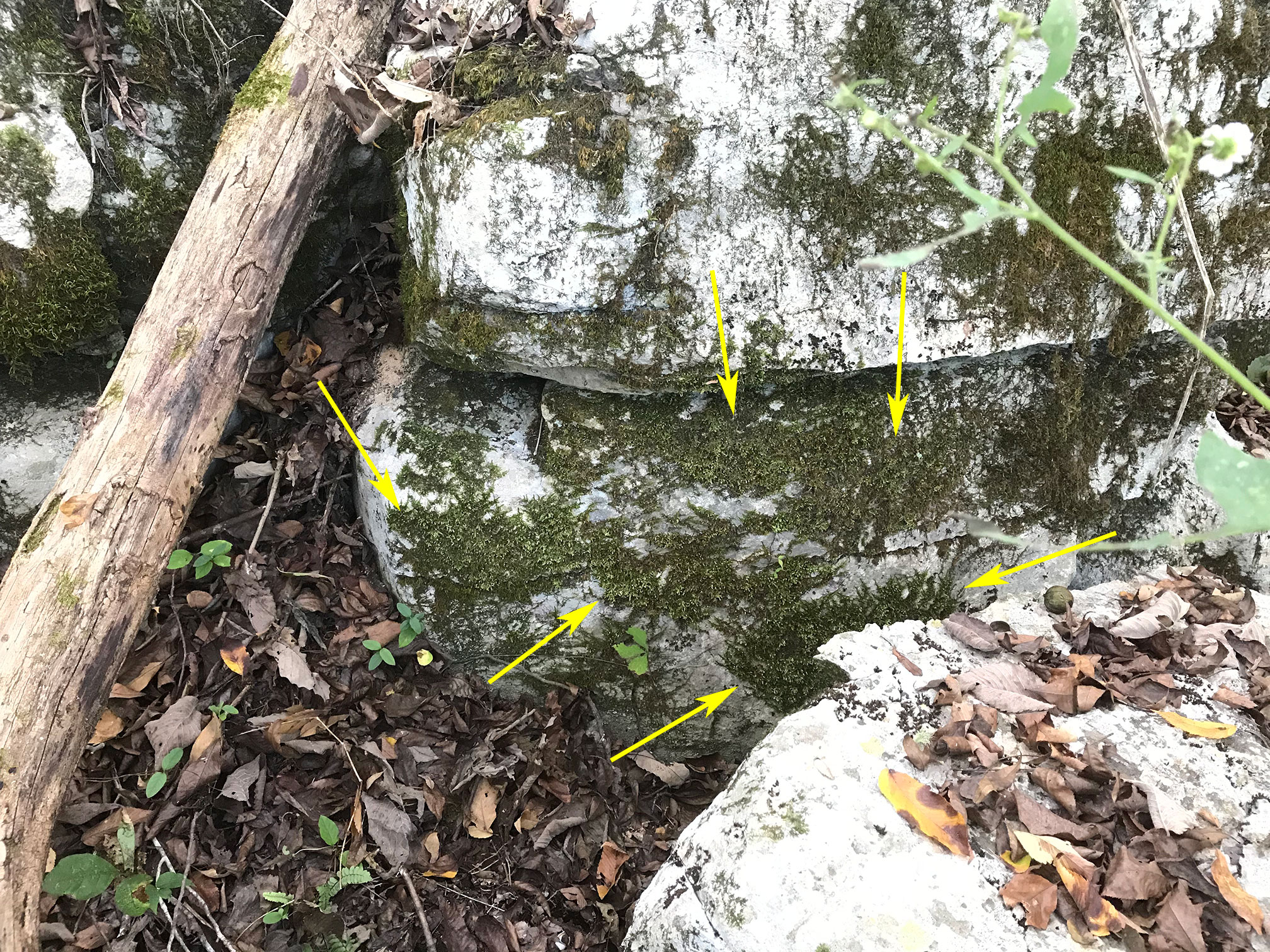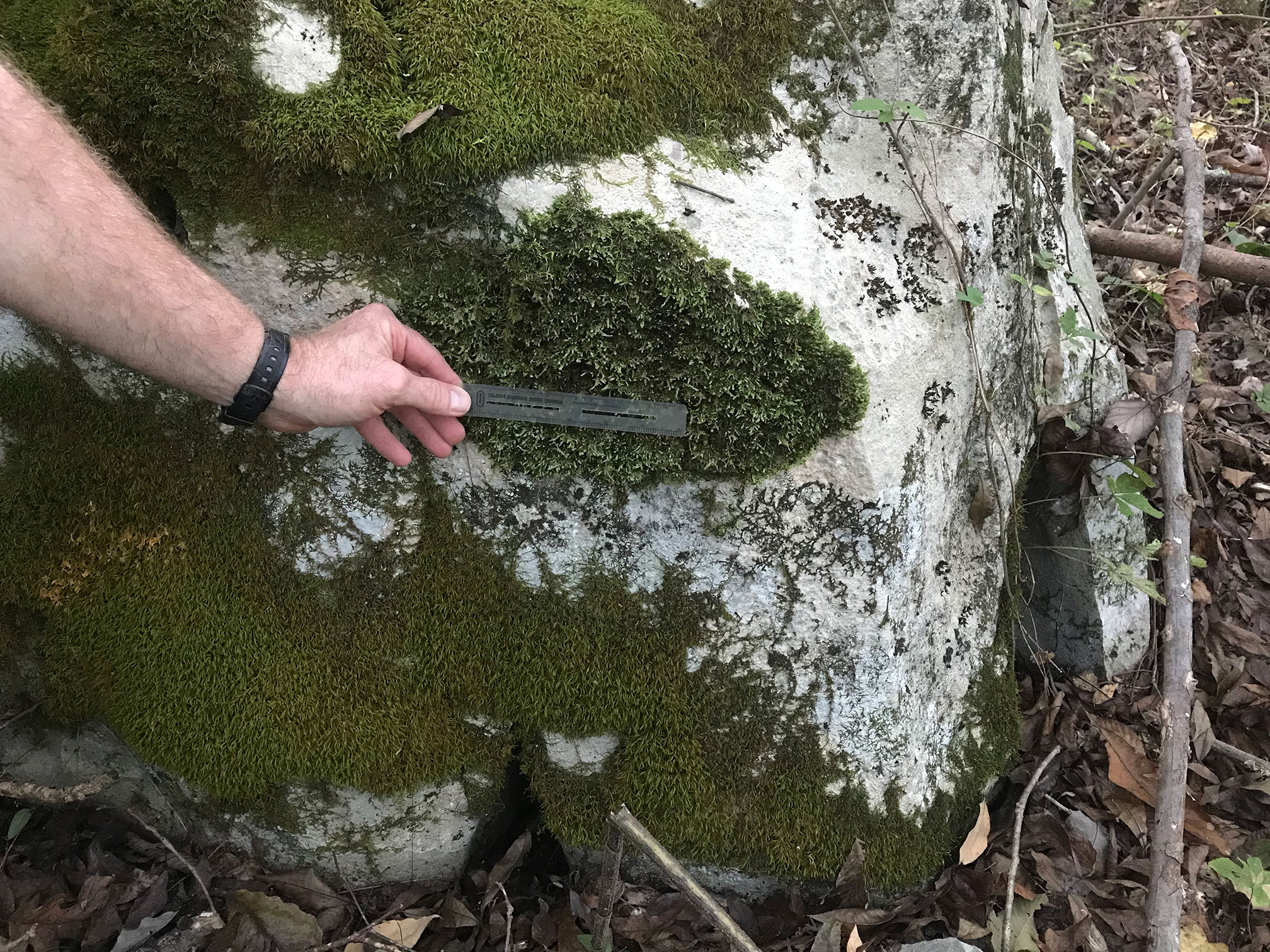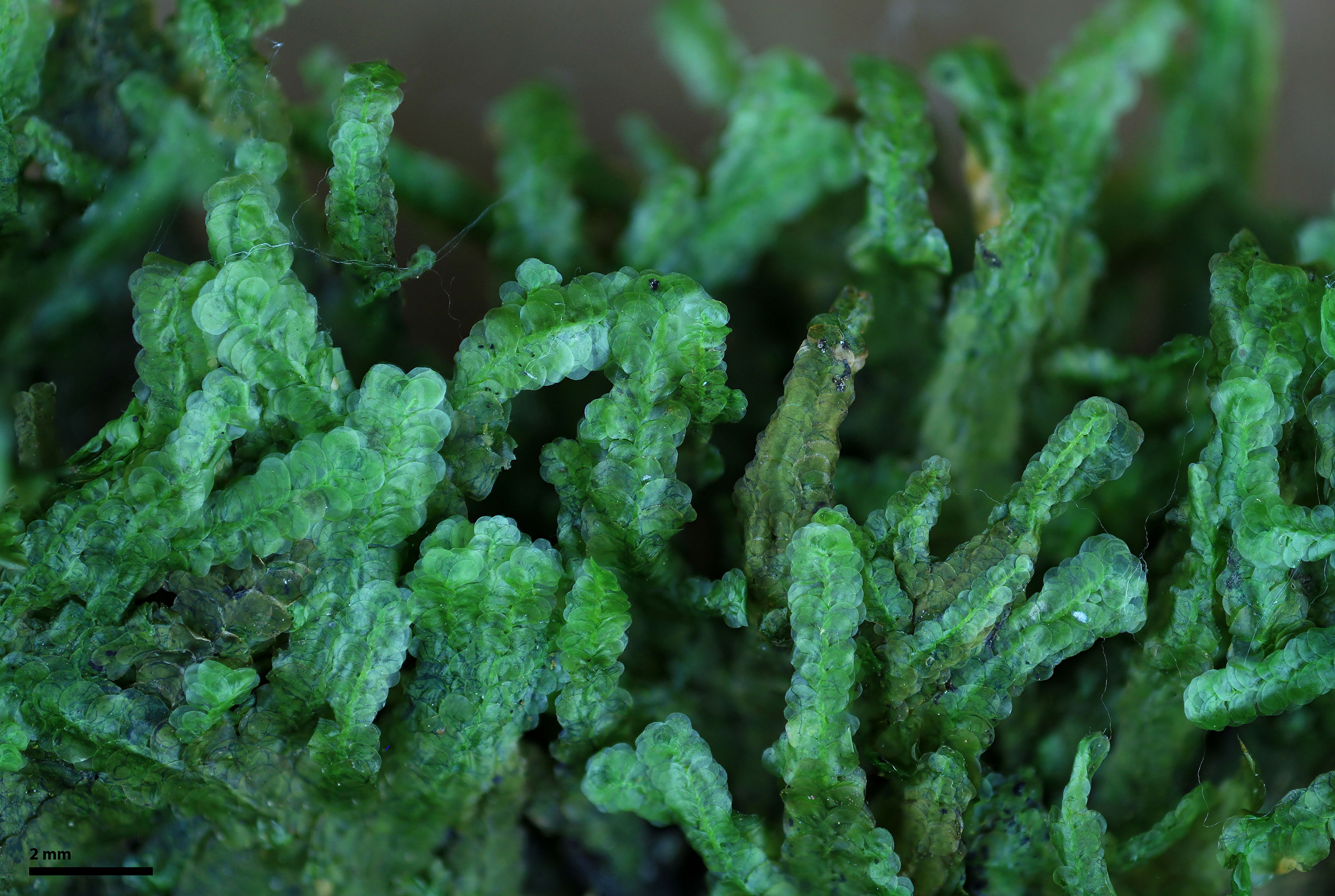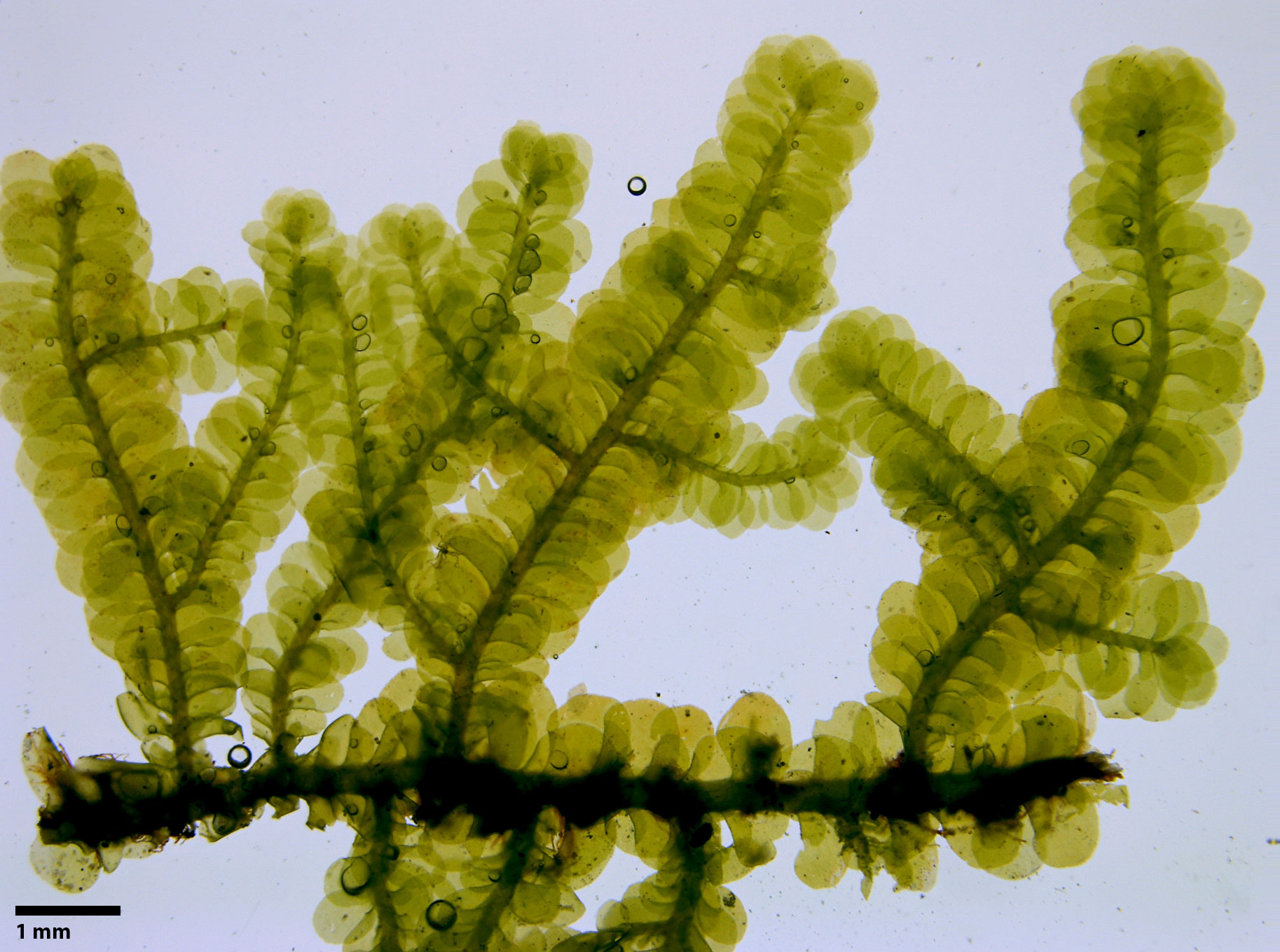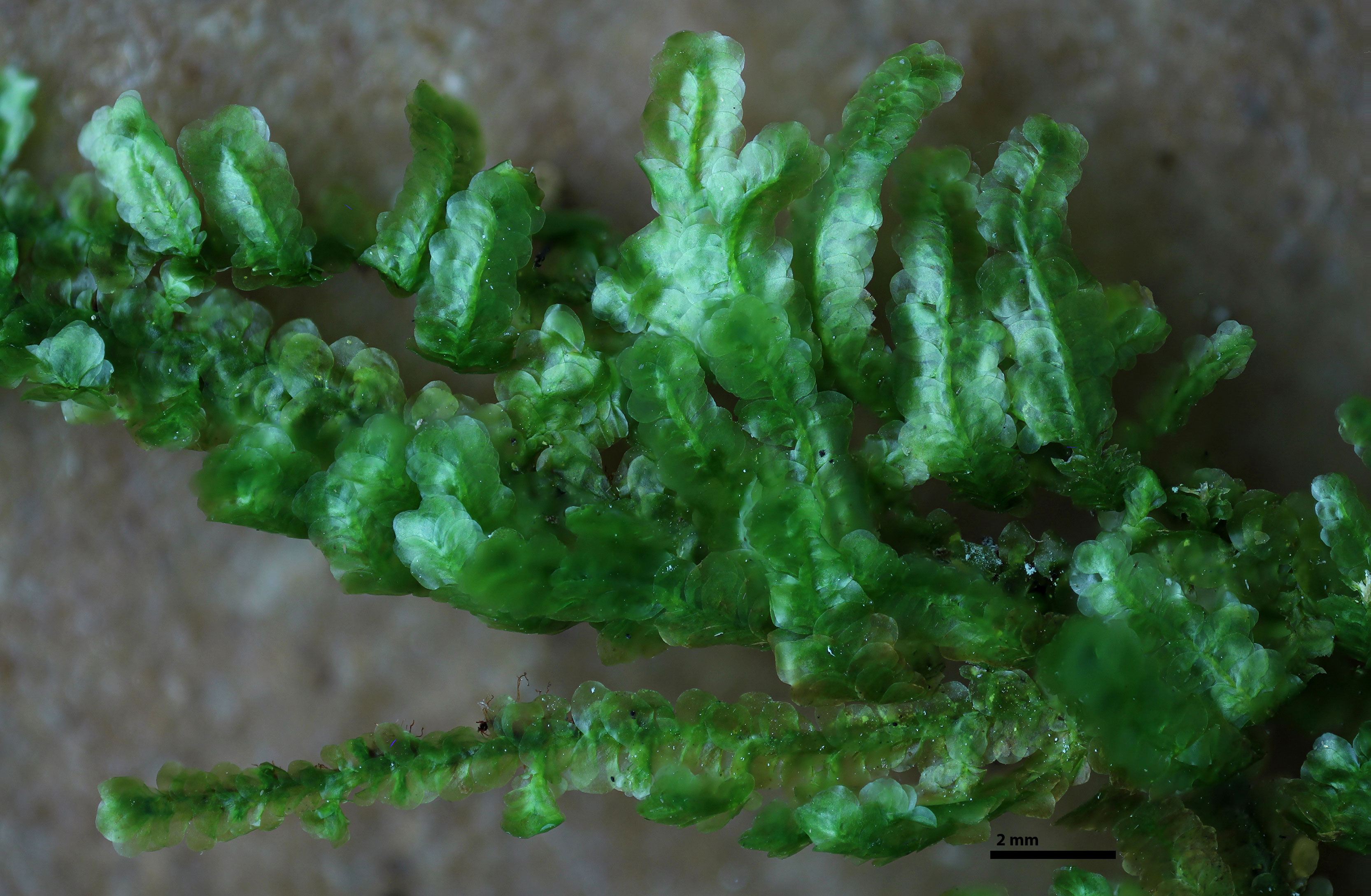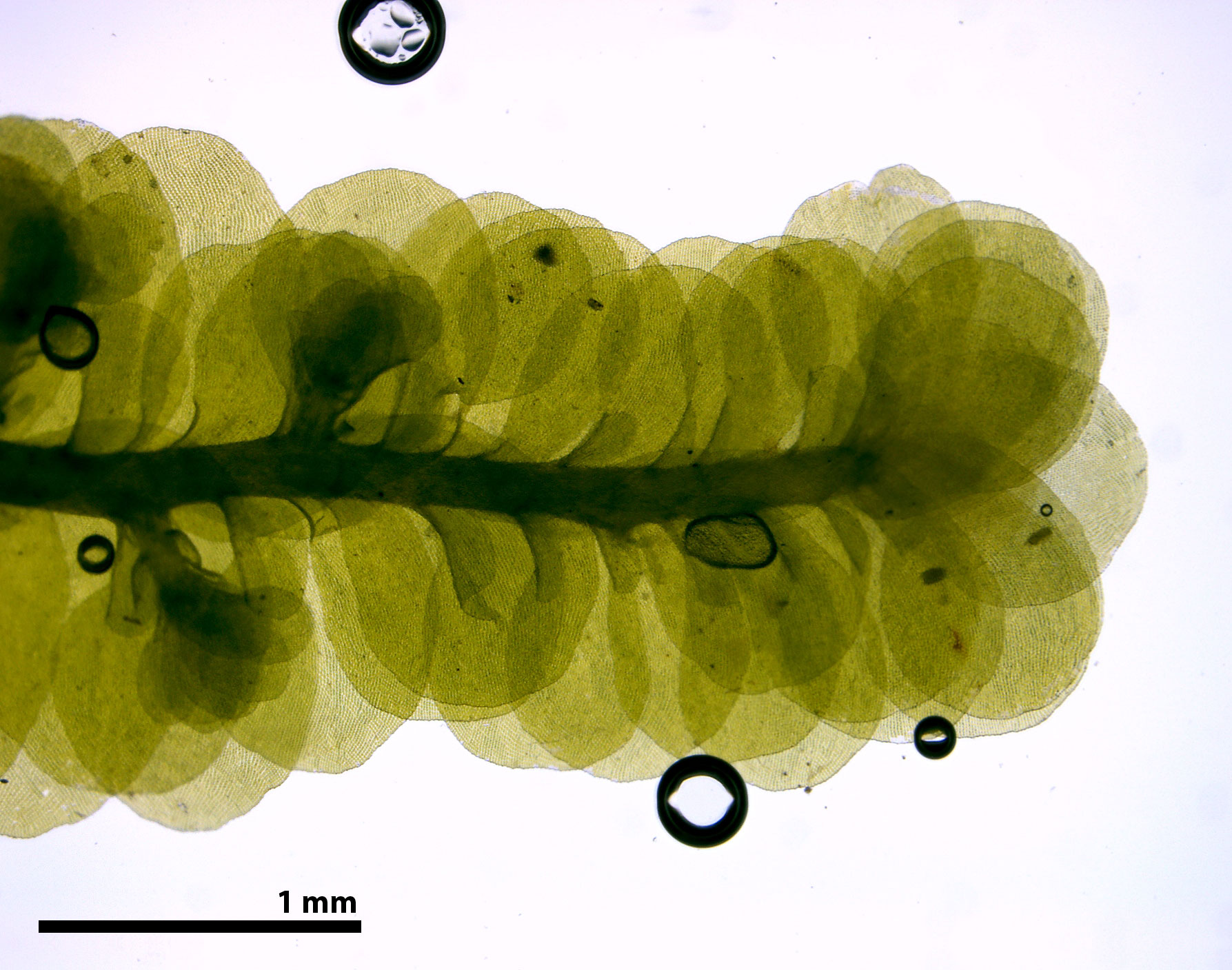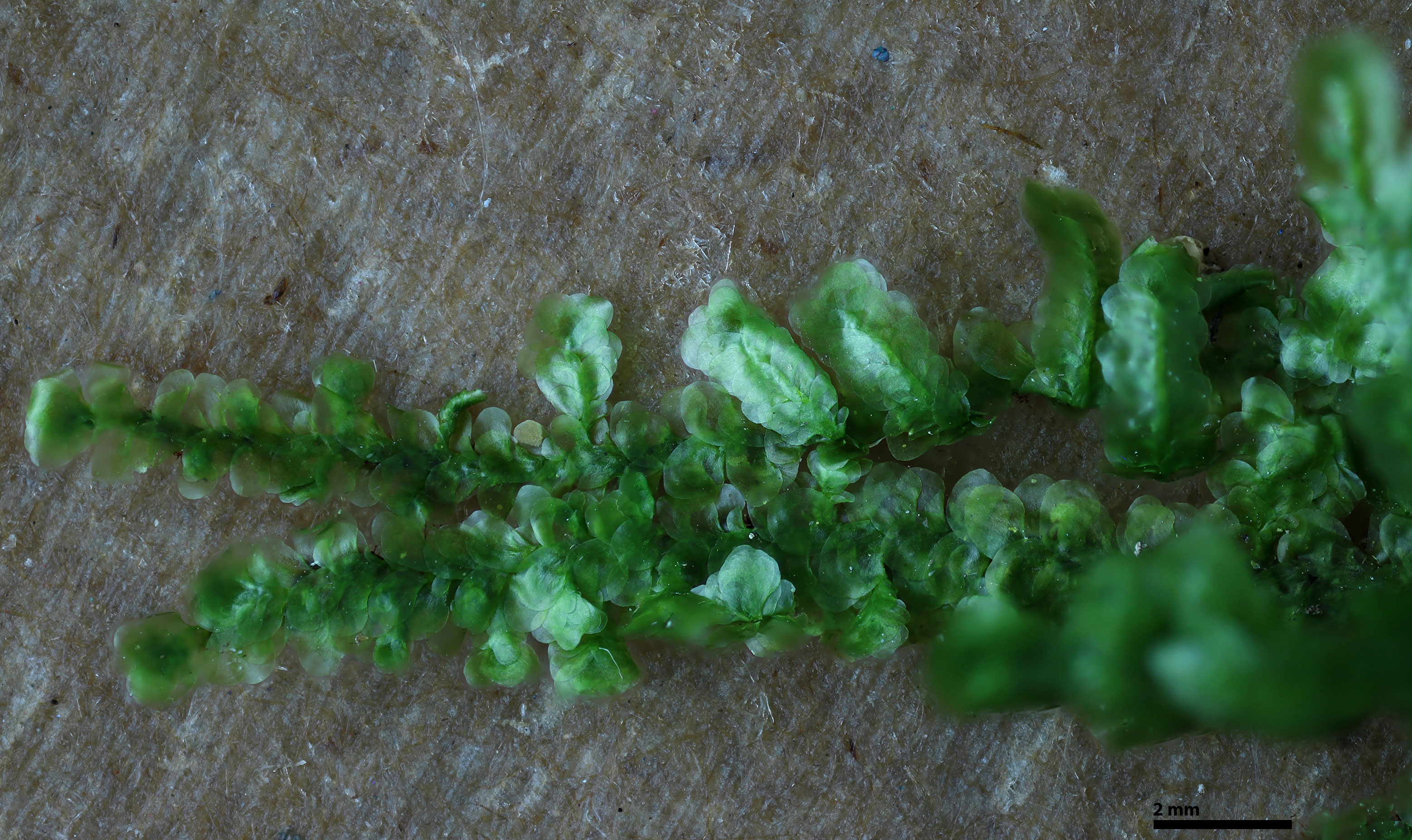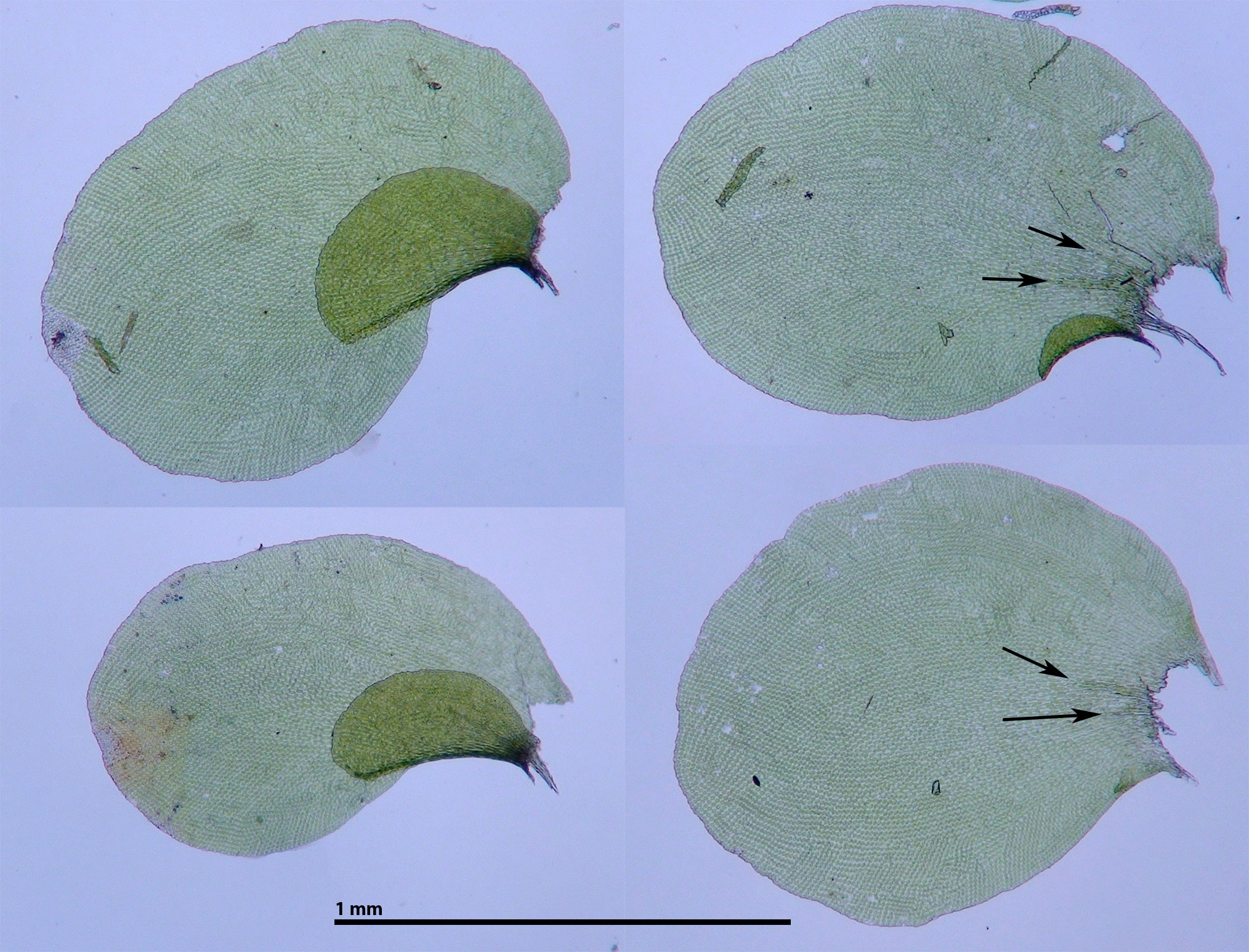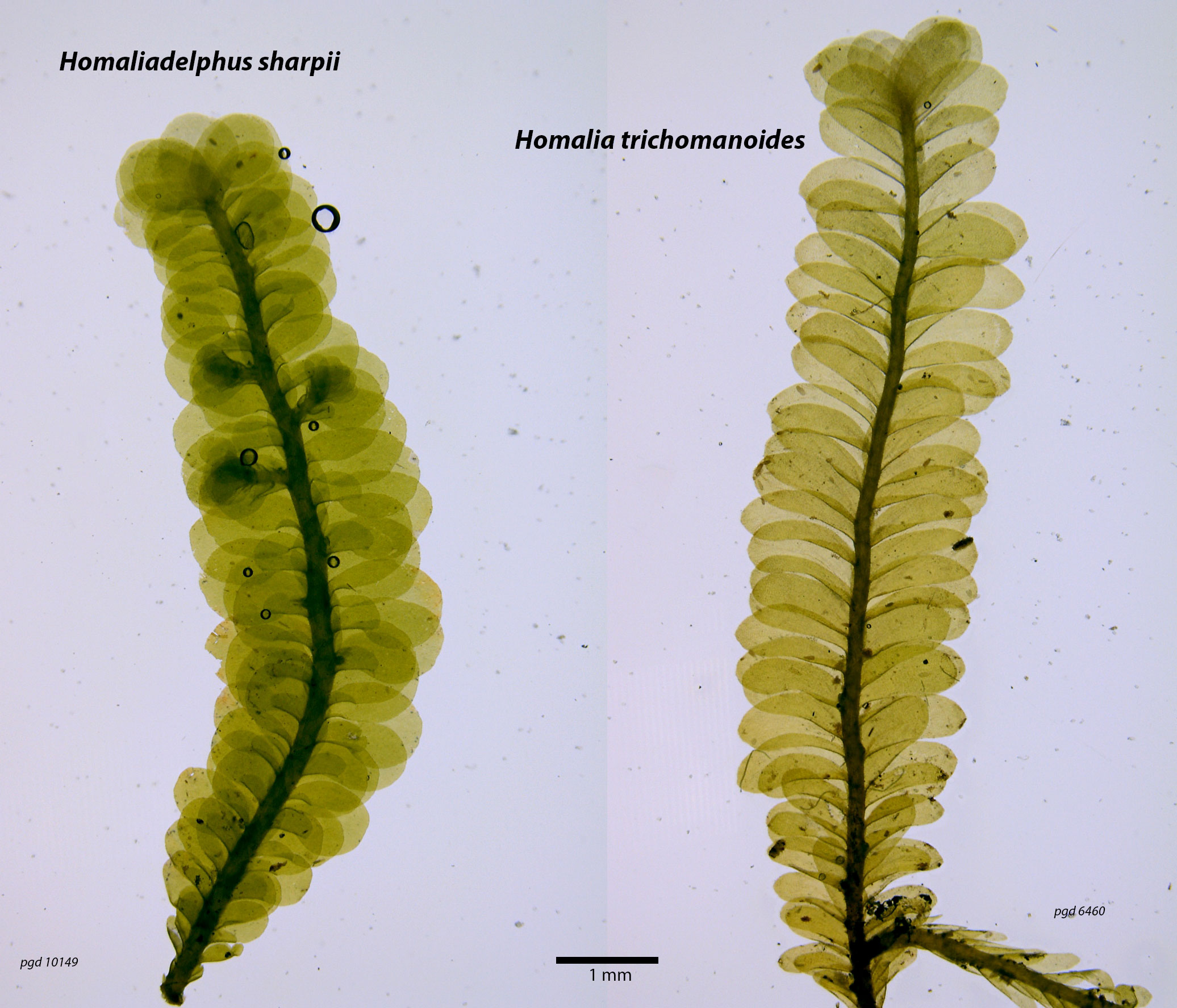Homaliadelphus sharpii (R.S. Williams) Sharp
Family: Neckeraceae
Synonyms
Homalia sharpii R.S. Williams
NatureServe Conservation Status
G3?
Distribution
North America. U.S.A. (Alabama, Missouri, North Carolina, Tennessee, Virginia). Mexico. Asia. Crum and Anderson (1981), Sastre-de Jesús (2014).
Habitat
Found in forested habitats on rather dry calcareous rock in high humidity. Rocks may be along cliffs or simply outcrops and low boulders along the base of slopes, in sinkholes, or along stream ravines. Also known as an epiphyte occurring on the trunk of a tree in Dickenson County, Virginia (A.C. Risk 4228, MDKY). In North America at relatively low evelations, mostly ca. 500-2000 ft; the highest known elevation is 2800 ft, East Fork of Tuckaseegee River in Jackson County, North Carolina (L.E. Anderson 21311, DUKE), where apparently very scarse in narrow crevices.
Brief Description and Tips for Identification
A very distinctive moss with flattened shoots ca. 1-2 mm wide, very shiny with rounded leaves that are hardly altered upon drying. Some leaves (the lateral leaves) have a basal lobe on the adaxial side of the leaf. Leaves are ecostate, or with the costa short and double. When first discovered and before the species was named, the eponymous Aaron John (Jack) Sharp instructed his students that the plant was a liverwort with a lobule (verbal testament by Dr. Sharp). Given the rounded leaf apices and presence of small leaf lobes, this moss should not be confused with any other moss. While difficult to count, the leaves are inserted in eight rows (Crum and Anderson 1981). Leaves of leafy liverworts are inserted in two or three rows.
Dioicous. Male plants are dwarf and epiphytic on female plants. Sporophytes are apparently unknown in North America (Crum and Anderson 1981). At one time male plants were thought to be absent in North America (Iwatsuki 1958).
Homalia trichomanoides is a similar moss often with rounded leaf apices and flat, shiny shoots; however the leaves are clearly costate, are more elongated, and all leaves are without basal lobes.
Salient Features
- Shiny, flattened shoots
- Leaves obovate to nearly rounded
- Leaf apex rounded
- Lateral leaves with a basal lobe
References
Crum, H. A., and L.E. Anderson. 1981. Mosses of Eastern North America (Vol. 2). Columbia University Press
Iwatsuki, Z. 1958. Review of the genus Homaliadelphus. The Bryologist, 61(1), 68-78.
Sastre-de Jesús, I. 2014. Homaliadelphus. In: Flora of North America, North of Mexico 28: 609-610.
Sharp, A.J. 1944. Notes on Interesting Bryophytes of the Southern Appalachians, IV. Castanea 9: 106-108
Williams, R. S. 1931. Homalia sharpii, sp. nov. The Bryologist, 34(2), 20-21.
Habitat
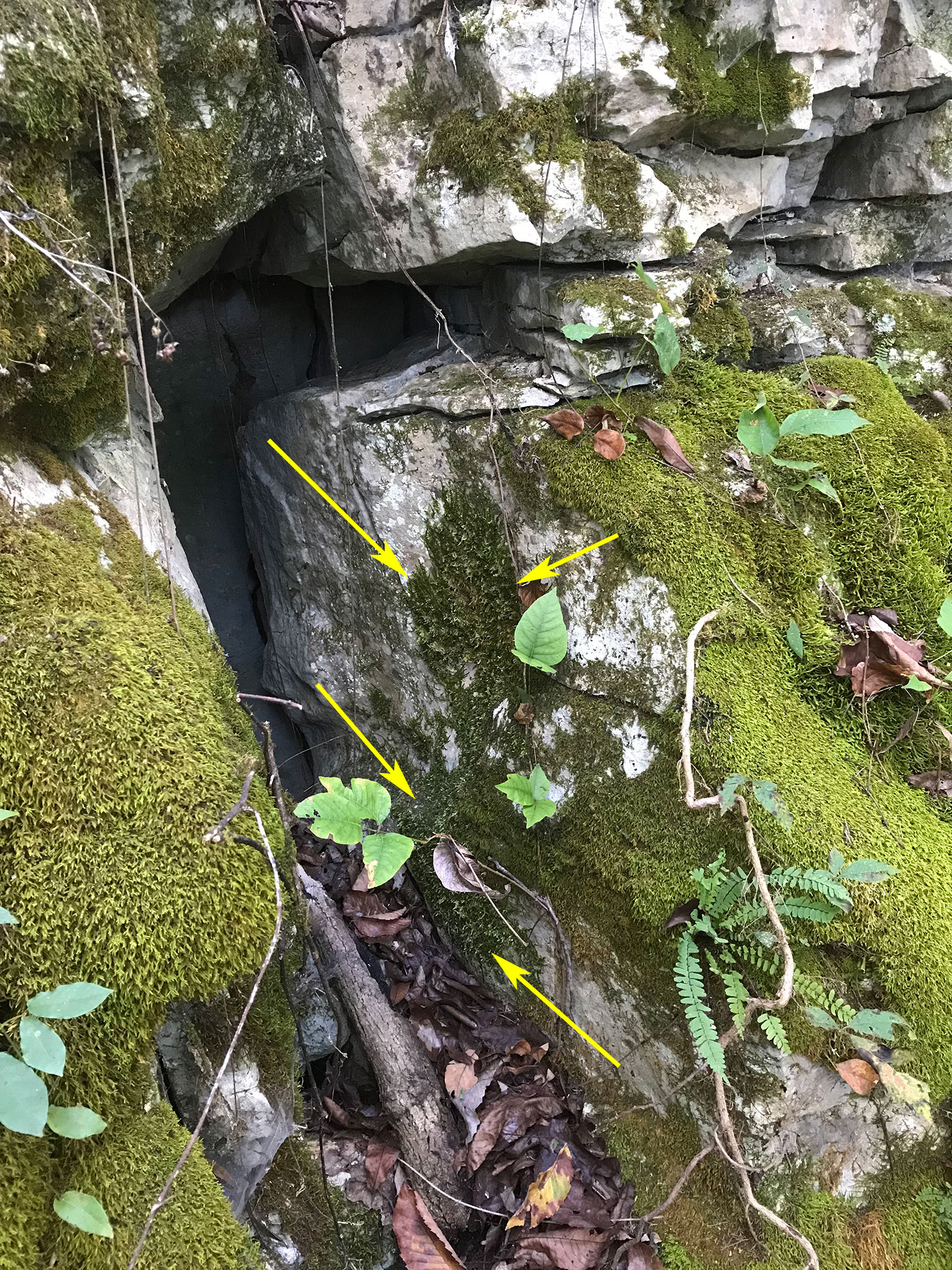
Homaliadelphus sharpii
Here in Marion County, Tennessee, H. sharpii forms relatively large patches. At least in one of the two historically known stations in Jackson County, North Carolina, only scarce material was found in narrow rock crevices "rather high up vertical rock cliff" (L.E. Anderson 21311, DUKE).
Habit
Habit
Morphology
Similar Taxa
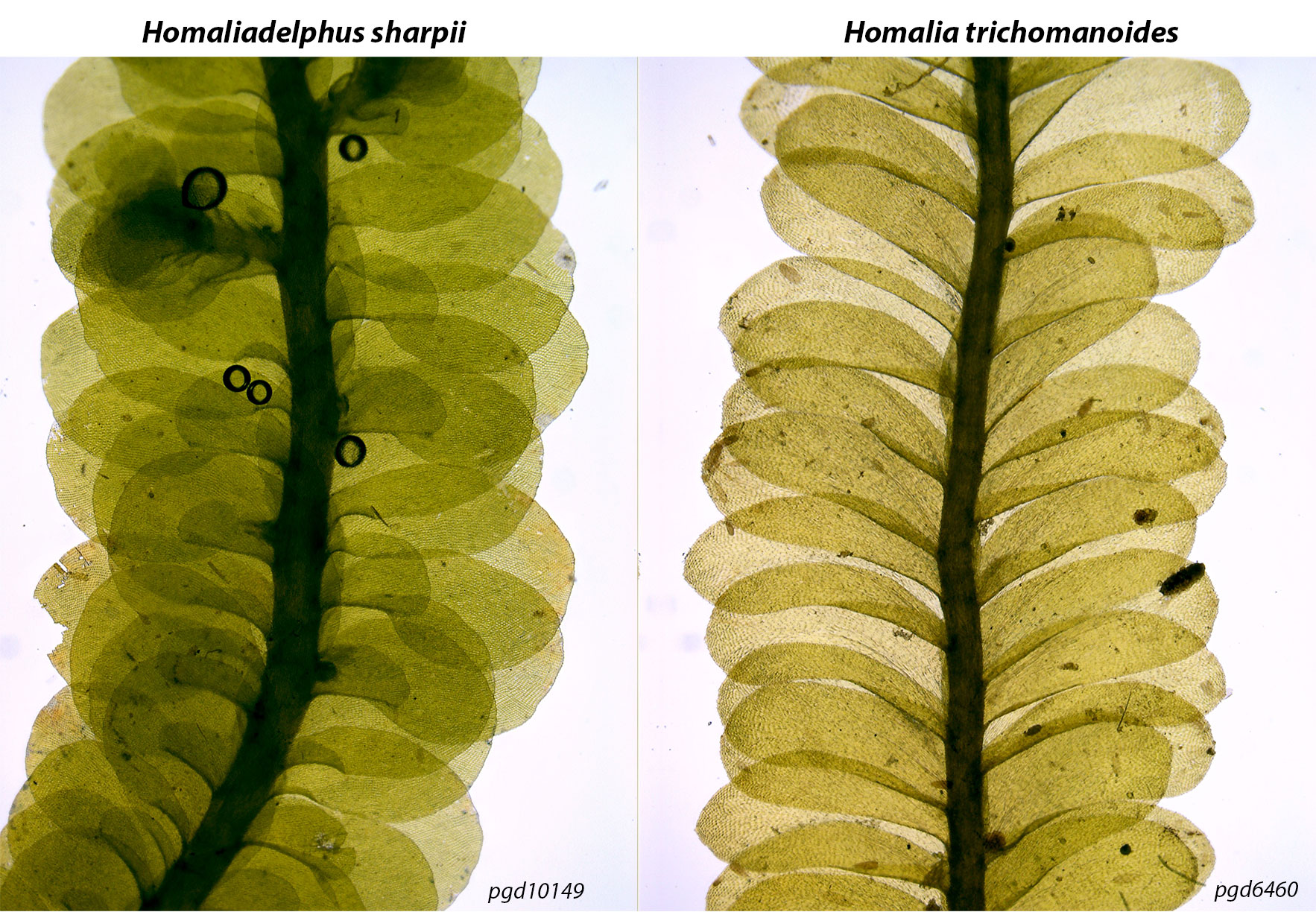
Homalia trichomanoides vs. Homaliadelphus sharpii
The small lobes near the base of leaves are easily seen in Homaliadelphus sharpii and are absent in Homalia trichomanoides. The costae in the leaves of H. trichomanoides are hardly visible in the image above. The costae are very slender, extending about half way to the leaf apex, and can be seen in several leaves when the image is opened to 100%.
